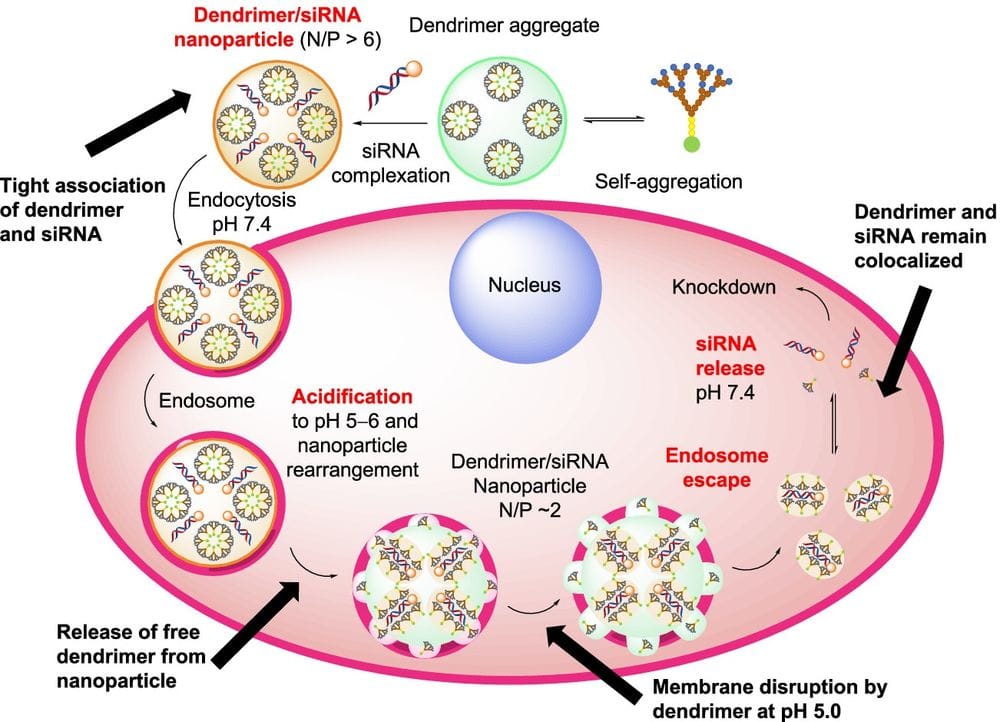Fluorescent Peptide Dendrimers for siRNA Transfection: Tracking pH Responsive Aggregation, siRNA Binding, and Cell Penetration

The research article Fluorescent Peptide Dendrimers for siRNA Transfection: Tracking pH Responsive Aggregation, siRNA Binding, and Cell Penetration was recently published in Bioconjugate Chemistry.
Transfecting nucleic acids into various cells is a key procedure in biological research also envisioned for therapeutic applications. In our effort to obtain simple reagents that would be readily accessible from commercial building blocks, we recently reported peptide dendrimers as single component siRNA transfection reagents accessible in pure form by solid-phase peptide synthesis. Here, we extend our studies of these dendrimers by identifying analogs bearing a coumarin or BODIPY fluorescent label in their core and displaying comparable siRNA transfection efficiencies, pH dependent aggregation, siRNA binding, and secondary structures. Fluorescence resonance energy transfer (FRET) studies show that the dendrimers are tightly associated with siRNA within the formed nanoparticles at pH 7.4 but are released into solution at pH 5.0 and can participate in endosome escape by destabilizing the membrane at this pH value. Colocalization studies furthermore suggest that peptide dendrimers and siRNA remain tightly associated throughout the transfection process.
Author(s): Marc Heitz, Susanna Zamolo, Sacha Javor, and Jean-Louis Reymond